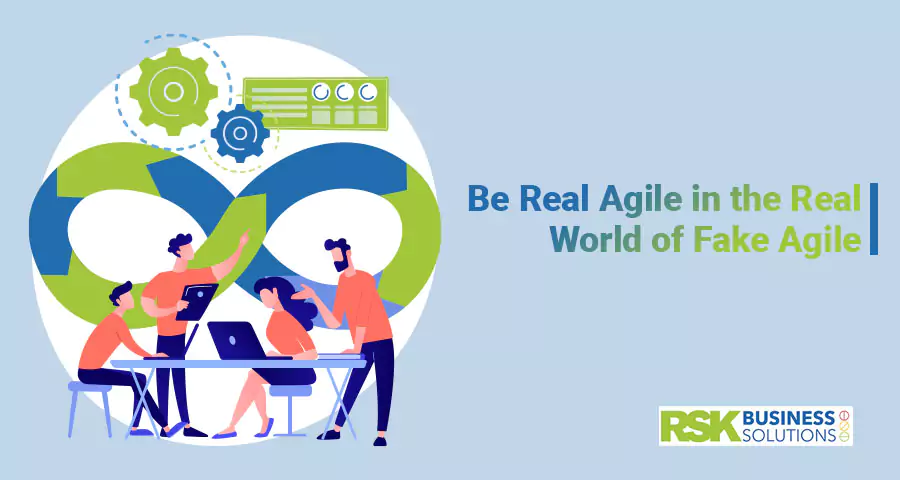
“We are moving towards a world I think where… Agile will simply be management, and the normal way to run a company will be Agile” —Steve Denning
Customers today demand instant gratification. In 2019, as the number of businesses boom, only the businesses that adapt to the evolving dynamics of the ever-demanding customers can thrive. One of the easy ways to ease this process and scale a business quickly is to break the process down into bits and pieces and focus on each part.
Related Articles

Pen Testing
RSK BSL Tech Team
April 14, 2025
|
|

Pen Testing
RSK BSL Tech Team
April 9, 2025
|
|

Pen Testing
RSK BSL Tech Team
April 7, 2025
|
|

Pen Testing
RSK BSL Tech Team
April 3, 2025
|
|

Pen Testing
RSK BSL Tech Team
March 31, 2025
|
|

Pen Testing
Praveen Joshi
March 27, 2025
|
|

Pen Testing
RSK BSL Tech Team
March 25, 2025
|
|

Pen Testing
RSK BSL Tech Team
March 20, 2025
|
|

Pen Testing
RSK BSL Tech Team
March 18, 2025
|
|

Pen Testing
RSK BSL Tech Team
March 10, 2025
|
|

Software Development
RSK BSL Tech Team
February 24, 2025
|
|

Pen Testing
RSK BSL Tech Team
February 19, 2025
|
|

Software Development
Praveen Joshi
February 11, 2025
|
|

insight
Praveen Joshi
January 31, 2025
|
|

AI Tech Solutions
Praveen Joshi
January 27, 2025
|
|

Software Development
Praveen Joshi
January 20, 2025
|
Be Real Agile in the Real World of Fake Agile
“We are moving towards a world I think where… Agile will simply be management, and the normal way to run a company will be Agile” —Steve Denning
Customers today demand instant gratification. In 2019, as the number of businesses boom, only the businesses that adapt to the evolving dynamics of the ever-demanding customers can thrive. One of the easy ways to ease this process and scale a business quickly is to break the process down into bits and pieces and focus on each part.
This means, one of the ways to ease this process and scale a business quickly is to become Agile.
What is Agile Project Management?
Agile management is a set of principles that help manage projects and teams. Agile improves the teams’ performance and accountability. Agile is a behaviour using a combination of methodologies and technologies, and its application is both a science and an art. Agile helps in generating more value in less time, rather than doing more work in less time.
How do you become Agile?
To become Agile, you need to follow the three laws:
- The law of small teams
- The law of the customer
- The law of the network
What is fake Agile?
The firms which are Agile in name only are called fake Agile. To identify if the firm is Agile, we have to look at how they are operating, and not what they are saying about being Agile. Fake Agiles are companies which implement the processes of Agile without having the Agile mentality. As Denning says, “They are doing Agile without being Agile.” You may have teams executing Agile processes, but if the team members’ hearts are not in it, they are not called Agile.
However, the tricky part is that most firms are not aware of their Fake Agility, and are not even aware of how they should actually be Agile.
How is ‘fake’ Agile implemented?
1. Simply breaking down project delivery to ‘Sprints’
Sprint is a process management technique, and not a software development technique, whereas Agile is a software development technique based on iterative and implemental approach. Simply breaking down the project requirements to ‘Sprints’ which act as key milestones is not being Agile.
2. Use of ‘proxy’ Product Owner rather than direct interaction between the Development team, Scrum Master and Product Owner
Often, companies introduce a ‘proxy’ Product Owner for their Product Development team. This proxy can neither take suitable decisions for the product nor is accountable for the product’s success. The proxy also does not have any control over the product’s budget, vision or strategy. A proxy may be part of the management, but he will not create value for the Agile team.
3. Development team being pressured to include ‘high’ priority items because of the ‘it just needs to be done’ syndrome with Product Owner
Some divisions in companies are developing their own Agile or trying to find means to become more Agile. For example, HR may apply general principles of Agile without using the tools and the rules of the true Agile. Here too, there is the use of Agile without having the Agile mindset.
“The biggest risk is on-boarding people at the senior level… If they are not on the same page, then the organization is heading for immediate problems.” —Steve Denning
4. Not following all Scrum ceremonies, or the team not being engaged in Scrum activities
Scrum has 4 key ceremonies:
– Sprint Planning Meetings
– Daily Scrum
– Sprint Review Meetings
– Sprint Retrospective Meetings
As with any ceremony, the Scrum ceremonies provides a broad base for teams to perform cohesively and help get the work done in a structured manner. It helps in listing the tasks, establishing collaboration and driving results. It is important to do all the ceremonies even if you don’t do them perfectly.
If they don’t plan the Sprint correctly, they may miss out on key opportunities.
Of all, the Daily Scrum is the most important scrum because it allows teams to raise issues daily. The Review Meetings allow the Sprint to be evaluated in front of a live audience. The Retrospective Meetings help in providing corrective measure if things are not working.
“An obsession with delivering value to the customer… and giving everyone a clear line of sight to the ultimate end user.” —Steve Denning
5. Lack of open communication within the team
The role of the Scrum Master is to ensure all voices are heard within the team, and not just that of some key individuals trying to influence the Sprint goals. If the communication channels are not open between the Developer, Scrum Master and Product Owner, then most certainly you are running “fake” agile.
6. Following only ‘Branded Agile’
This Agility is found when an Agile Software Development company implements only one of the Agile laws of the three. They choose what is most convenient to them, and settle with calling them Agile by being only partially Agile. In this case, the focus is on using processes that are branded, rather than making the organisation Agile. The companies may also choose to give up on Agile as and when it is convenient to them, especially since Agile tries to change the status quo of the companies by changing the established rules and protocols.
So, how do you ensure that you are Agile in the right way that you should be?
Becoming Agile requires one main thing: adopting the right processes. By adopting the right processes, we can adapt to changing conditions to be Agile.
Being Agile requires a strong team that truly understands the benefits and importance of being Agile. The key is to train not just the Development team, but also the Product Owner about how Scrum can add value to the product development cycle. This needs someone within the team to implement the Scrum and get the team engaged. Each member needs to collaborate and be open to participating in all the ceremonies of Scrum. The Management should give full support to the Product Owner, Scrum Master and Development team.
Instead of scaling the organization up… it’s descaling the work down to small pieces, small teams, small batches, small cycles… (In this way) you can in fact handle some very large, complex problems.” —Steve Denning
RSK Business Solutions can help you implement and integrate Agile Scrum into your existing development processes. Contact us here.
Praveen Joshi
Praveen is a seasoned IT Solutions Leader and Director at RSK Business Solutions, a technology-driven IT Consulting Company that specializes in Bespoke Software Development, Agile Consulting, Mobile App Development, Smart Sourcing, and much more. For the last 17 years, he has been delivering quality custom IT solutions that help businesses achieve their goals.

 Share
Share Post
Post Tweet
Tweet Copy
Copy


